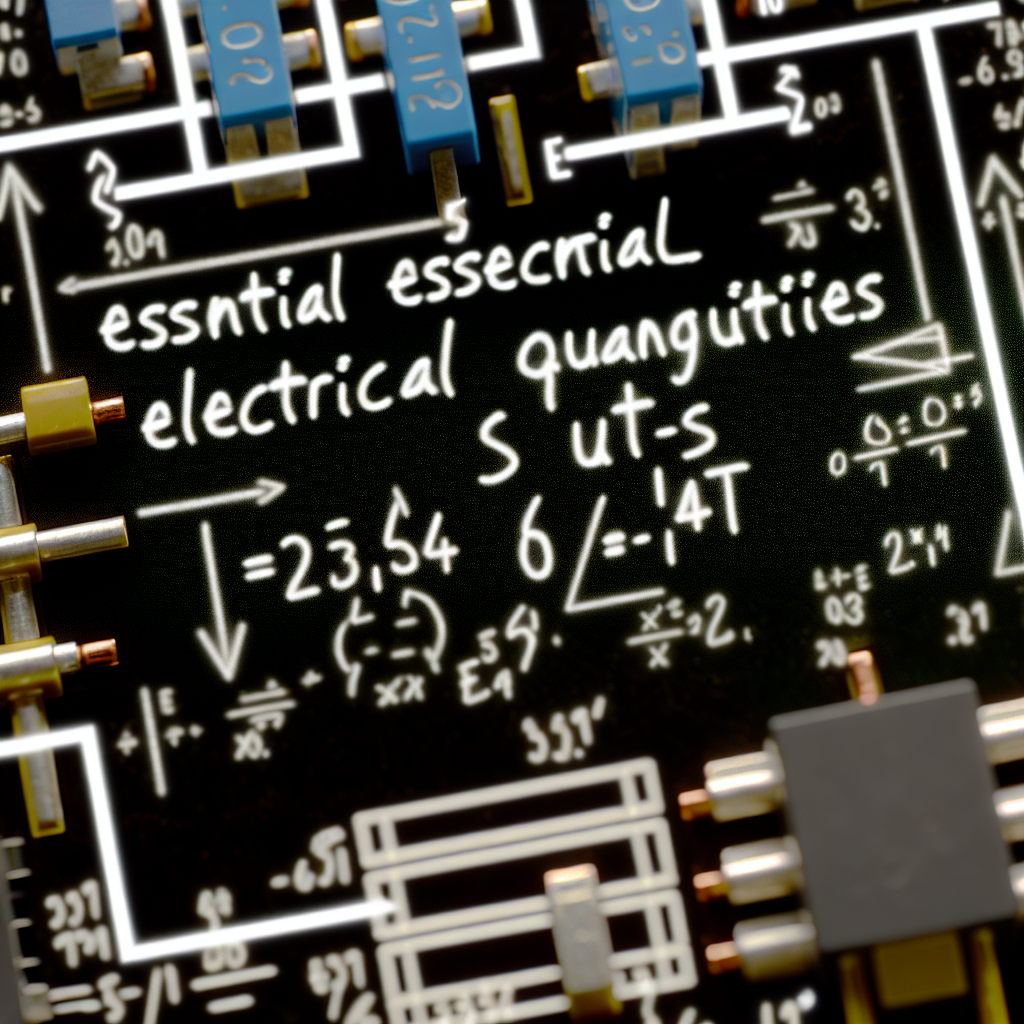Understanding electrical quantities, their units, and symbols is fundamental for anyone involved in electrical engineering or physics. Proper knowledge of the International System of Units (SI units) enhances clarity in communication and ensures consistency across scientific disciplines. In this article, we will explore essential electrical quantities, their SI units, and symbols, providing a clear guide for students and professionals alike.
Fundamental Electrical Quantities and Their SI Units
Electrical quantities are physical properties that describe electrical phenomena. The SI system provides standardized units for these quantities, facilitating universal understanding and measurement precision. The core electrical quantities include electric charge, electric current, electric potential difference (voltage), resistance, capacitance, and inductance.
- Electric Charge (Q): Measured in coulombs (C). It quantifies the amount of electricity transported by a current.
- Electric Current (I): Measured in amperes (A). It reflects the rate of flow of electric charge per second.
- Voltage (V): Measured in volts (V). It indicates the electrical potential difference between two points.
- Resistance (R): Measured in ohms (Ω). It describes how much a material opposes the flow of current.
- Capacitance (C): Measured in farads (F). It indicates a capacitor’s ability to store charge.
- Inductance (L): Measured in henrys (H). It characterizes a circuit’s tendency to oppose changes in current through magnetic fields.
These units are standardized in the SI system, which ensures consistency in electrical measurements worldwide. Recognizing the correct symbols, such as I for current or V for voltage, is crucial for clear technical communication.
SI Units and Their Practical Significance in Electrical Engineering
The SI units serve as the backbone for designing, analyzing, and troubleshooting electrical systems. For example, knowing that current is measured in amperes helps engineers determine appropriate wire sizes and safety measures. The standard symbols and units also ensure that specifications, circuit diagrams, and component datasheets are universally understood and correctly interpreted.
Furthermore, understanding derived units such as ohm (Ω) for resistance or farad (F) for capacitance helps in comprehending the behavior of complex electrical circuits. Mastery of SI units and their symbols enables accurate calculations, efficient communication, and adherence to industry standards, which are essential for innovation and safety in electrical applications.
In conclusion, mastering electrical quantities, their SI units, and symbols is vital for effective communication and precise measurement in the electrical field. From fundamental units like amperes and volts to derived units such as ohms and henrys, understanding these concepts fosters better design, analysis, and troubleshooting of electrical systems. Keep learning and stay updated with trending electrical knowledge for success in this exciting field.
